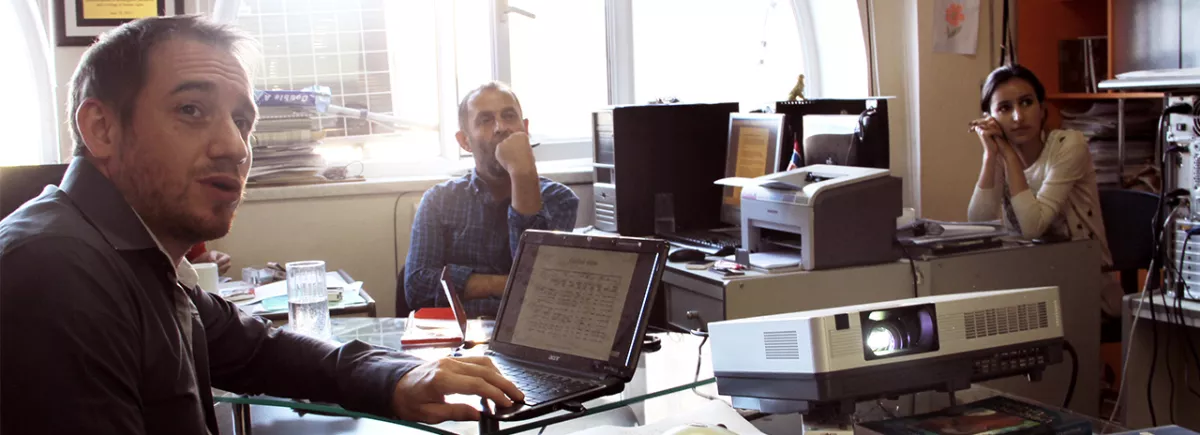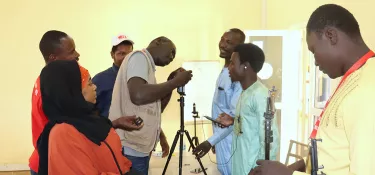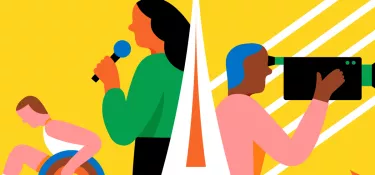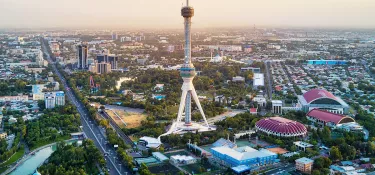
"4M Caucasus": interview of Liana Sayadyan, Deputy Editor of the Armenian website Hetq
Related project
4M CaucasusIn the wake of the November 2013 4M Forum in Tbilisi (Georgia), CFI set up the #4M Caucasus project to support the production and dissemination of high-quality news for 3 internet news media in countries in Armenia and Georgia.
 Cyrille Frank, a journalist and media consultant for CFI, went in Yerevan (Armenia) from 22 to 26 September 2014 for the 2nd training session on the use of social networks for journalists from the Hetq news and investigative magazine.
Cyrille Frank, a journalist and media consultant for CFI, went in Yerevan (Armenia) from 22 to 26 September 2014 for the 2nd training session on the use of social networks for journalists from the Hetq news and investigative magazine.
To promote better understanding of the media context and working conditions of journalists in Armenia, Liana Sayadyan, Deputy Editor at Hetq, answers Cyrille Frank's questions.
Cyrille Franck : Describe for us, if you will, the context of the online media in Armenia – more particularly the investigative press. Which different media are involved in investigative journalism? Is investigative journalism successful?
 Liana Sayadyan : The first internet new media appeared in Armenia in the early 2000s. One of these was Hetq.am which focused on investigative journalism. To date, Hetq remains the sole outlet in Armenia that conducts investigative reportage. In the case of newspapers, the reason is financial and a lack of adequate human resources. Newspaper circulation in Armenia is tiny. The leading papers sell 3-4,000 copies daily on average and the largest circulation is about 7-8,000. In the case of TV stations, the reasons why they do not conduct investigative journalism is because they all are financially dependent on large capital sources and are answerable to the country's oligarchs and political parties. The country's leading TV companies are owned by the president's family. Since the business and political sectors in Armenia are closely intertwined, any investigative piece would most likely come into conflict with the interests of TV company owners or their immediate entourage. Following the 2008 election, Robert Kocharian, the president at the time, introduced a series of media restrictions including "self-censorship". News via the Internet was a way to circumvent these restrictions. Nevertheless, the number of independent sites was insignificant.
Liana Sayadyan : The first internet new media appeared in Armenia in the early 2000s. One of these was Hetq.am which focused on investigative journalism. To date, Hetq remains the sole outlet in Armenia that conducts investigative reportage. In the case of newspapers, the reason is financial and a lack of adequate human resources. Newspaper circulation in Armenia is tiny. The leading papers sell 3-4,000 copies daily on average and the largest circulation is about 7-8,000. In the case of TV stations, the reasons why they do not conduct investigative journalism is because they all are financially dependent on large capital sources and are answerable to the country's oligarchs and political parties. The country's leading TV companies are owned by the president's family. Since the business and political sectors in Armenia are closely intertwined, any investigative piece would most likely come into conflict with the interests of TV company owners or their immediate entourage. Following the 2008 election, Robert Kocharian, the president at the time, introduced a series of media restrictions including "self-censorship". News via the Internet was a way to circumvent these restrictions. Nevertheless, the number of independent sites was insignificant.
Years ago, it was difficult to speak about the effectiveness of the investigative press. Despite the media exposes of glaring violations and abuses of power, the guilty were rarely held accountable. We had to write directly to state officials, reminding them of the exposes we had published and demanding that they follow up with criminal investigations and government examinations. But in the last few years, the situation has slightly changed for the better. This year, Hetq published a number of glaring exposes and some cases are being investigated but it's difficult to predict if law enforcement will get to the underlying truth of the matter.
C.F.: Are the investigative media in Armenia able to finance themselves? What problems do they have regarding subscriptions, advertising and grants?
L.S. : A financially self-sustaining media is a big problem in Armenia. As noted above, given that business and politics in Armenia are so closely intertwined, the media is totally dependent on political capital. Commercial advertising is also a sector that is supervised from above. Due to the content of Hetq, we have a problem attracting advertisers. The bulk of our revenues are derived from grants, from cooperating with international investigative and from individual benefactors. Making the media available on a subscription basis is out of the question since information via the internet has been free from the beginning and Armenian readers take it for granted. If media outlets were to implement a fee based system they might risk losing readers. If the advertising market developed in Armenia, one not controlled by political forces, then you would see more independent news outlets. Another problem is media centralization in the hands of a few owners. This is especially true for the broadcast media. Plagiarism is quite widespread in the Internet news sector. Couple this with copyright violations and a low level of professional and you get a general picture of the challenges facing the media in Armenia today.
C.F. : Do those in a position of influence impose a level of censorship which is likely to restrict editorial independence? Is corruption a feature of the press in Armenia?
L. S. : Given that most media outlets have political sponsors or backers, there is no real need for outright censorship. Chief Editors know full well what to report and how. Rather, it is self-censorship that plays a large part in the Armenian media. This has an even greater negative impact since it suppresses a reporter's innate drive for freedom of expression. In Armenia, there are news outlets where commentators are paid to give a certain "spin" to stories. There are reporters and editors who offered advantages either to write positive stories, or to remain silent on embarrassing issues.
C.F. : What level of confidence in the media does the reading public have in Armenia?
L.S. : While the number of those viewing TV decreases yearly, its credibility rating still is relatively high and it remains the leading source for news. According to a public survey conducted this year, television was given as the most credible source for news (58%), followed by neighbours and friends in second place. Internet new sites came in third place. Research has shown that the information market in Armenia isn't a business driven by public demand, but that it is dependent on the political interests and sensibilities of media owners. The position and role of new media formats are constantly taking hold. The public is mainly informed as to developments via the new media formats. According to a public survey conducted this year, internet media and social networks were considered the most independent in Armenia. The audience for new media formats is growing dynamically and most of the traditional news outlets have made the switch to the Internet.


